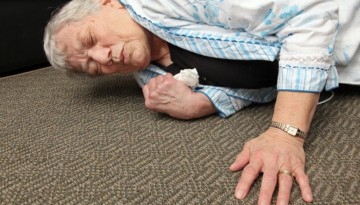By Brendan McNeely and Dr. Amanda Hu on February 9, 2022
Recent evidence has emerged that shows cannabis smoking is related to significant patient morbidity. Namely, cannabis smoke exposure increased the risk of oropharyngeal cancer in a dose-dependent manner. Cannabis use may also be associated with hearing loss, vestibular dysfunction, tinnitus, and sinusitis.
By Drs. Lauren Hughes and Heather L. O'Donnell on September 15, 2021
Acute onset of monocular flashes and/or floaters is a common presentation to primary care providers. Most often, this represents a posterior vitreous detachment (PVD), an age-related condition with a prevalence that increases from 24% in adults aged 50 to 59 to 87% among those aged 80 to 89 years.
By Shirley Jiang, Edward Tam, and Hin Hin Ko on August 4, 2021
Primary biliary cholangitis (PBC) is the most common autoimmune liver disease with an incidence of 1 in 1000 in women over age 40. For decades, the only evidence-based treatment was ursodeoxycholic acid. Unfortunately, the rate of inadequate response to UDCA is up to 40%. In 2017, Health Canada approved the use of obeticholic acid (OCA) for the treatment of PBC. UDCA remains first-line therapy for PBC with a long record of use and generic preparations but in non-responders, OCA treatment should be considered.
By Dr. Linda Uyeda and Dr. Ashley Miller on July 7, 2021
The ingredients needed to create a happy workplace also largely reflect the principles of secure attachment. Across all levels within organizations, if people do not feel “safe, seen, soothed, and secure” they are more likely to make errors, breach safety protocols, and struggle working together as a team.
By Drs. Raymond Mak and Tiffany Wong on January 27, 2021
Between 5% to 10% of the population reports an allergy to penicillin. After careful assessment, over 90% of these individuals are found to carry a false allergy label. Having a penicillin allergy label carries many potential harms, including prolonged hospital stays, increased patient costs, risk of more side effects, and an increase in resistant organisms. As such, penicillin allergy has become a major public health concern.
By Dr. Jeff Harries on December 7, 2020
Editor’s note: Here is the revised article on AUD by Dr. Harries, which more prominently emphasizes the stepwise approach in the BC AUD guidelines. We appreciate the patience of our readership and special thanks to Dr. Harries for his passion and commitment to treating AUD. We would also like to thank Dr. Keith Ahamad (co-chair […]
By Drs. Lawrence Chow and Rose Hatala on May 6, 2020
In the era of the COVID-19 pandemic, our most vulnerable patients (the elderly and those with chronic illnesses) are disproportionately at the highest risk of mortality. In this difficult and chaotic time, it’s more important than ever that we maintain a humanistic approach to care. This involves keeping the patient, and their values and preferences, front and center in our care.
By Tandi Wilkinson MD CCFP-EM on April 1, 2020
I conducted a study examining effective peer support in rural Canadian physicians. (Spoiler alert: those who have had good peer support say it is essential to their career in medicine.) Here is what I am doing now to ensure I, and my team, can manage through this unprecedented time at work.
By Mark W. Hull MD MHSc on November 13, 2018
Over the last five years, on an ongoing basis, we have seen new HIV infections occurring in young gay, bisexual and other men who have sex with men (MSM). The majority of these individuals had had a prior negative HIV test within the last year, or were presenting with signs or symptoms supportive of an acute HIV infection, suggesting recent exposure and transmission of HIV infection, highlighting the need for novel HIV prevention strategies.
By Dr. Vincent Hanlon on March 14, 2018
Mindfulness is the awareness that emerges through paying attention to the unfolding of experience moment by moment. This paying attention is done on purpose, in the present moment, and it’s non-judgmental.
By Julianne Yeager on September 14, 2016
If you employ people, you should have professionally drafted and implemented employment contracts. The time and cost of having contracts drafted and implemented are minor, in comparison to the time and cost of dealing with a wrongfully dismissed employee and their lawyer.
By Alison Hoens and Dr. Alex Scott on January 7, 2014
Tendinopathy of the lateral epicondyle can be a difficult problem to resolve. The Lateral Epicondyle Tendinopathy Toolkit is an excellent resource for physicians looking to quickly advise patients on interventions to manage both acute and chronic tennis elbow.
By Kristin Turner, MSc, CGC, CCGC on August 27, 2013
Identification of hereditary cancer families in BC is important to provide individuals at elevated cancer risk with appropriate screening and risk management recommendations.
By Dr. Teresa Liu-Ambrose on August 6, 2013
Falls are a common geriatric syndrome and are the third leading cause of chronic disability worldwide. Improved cognitive function, in particular executive functions, is an important mechanism by which the exercise reduces falls and improves overall mobility.













Recent Comments